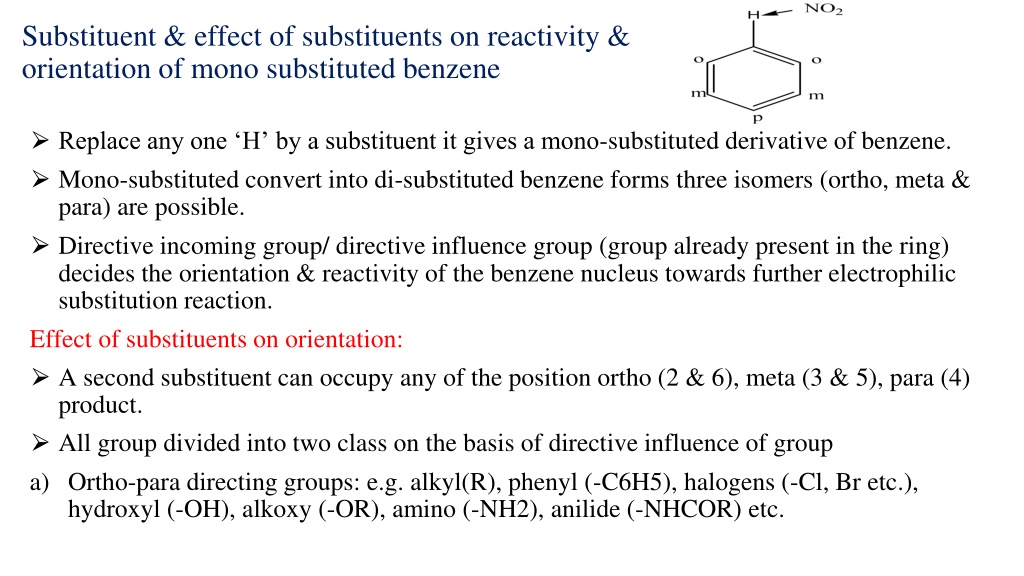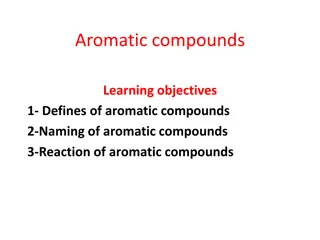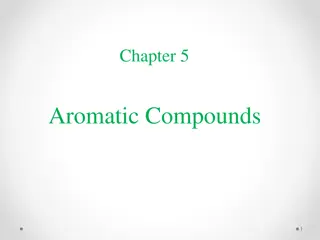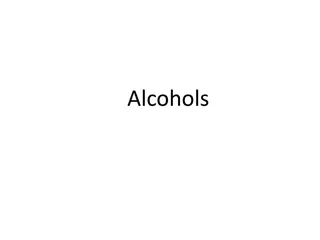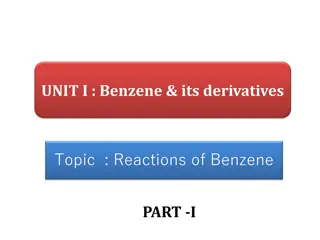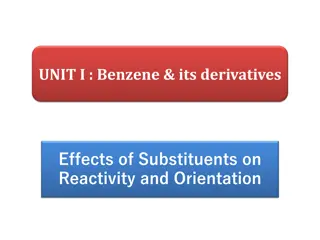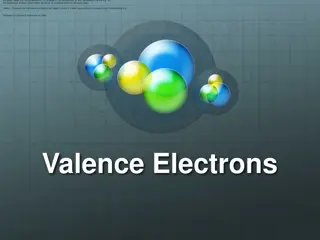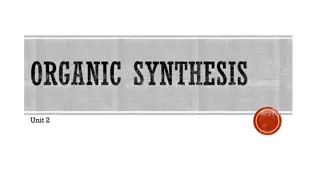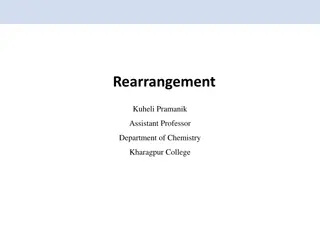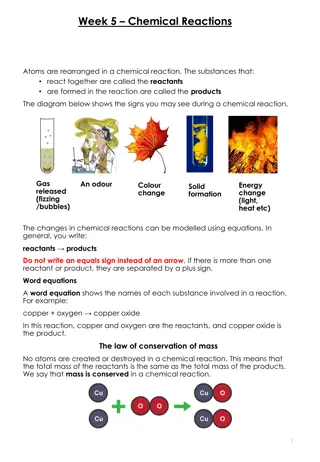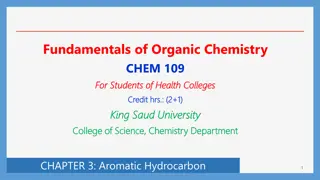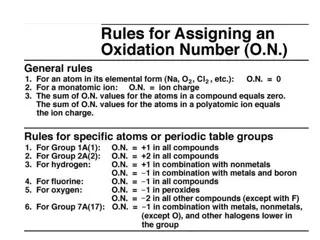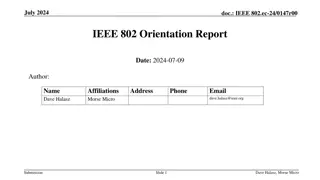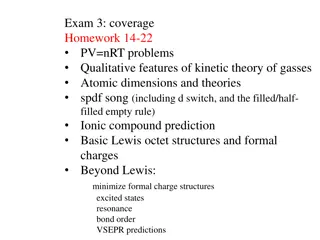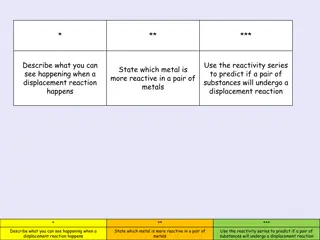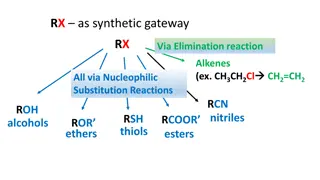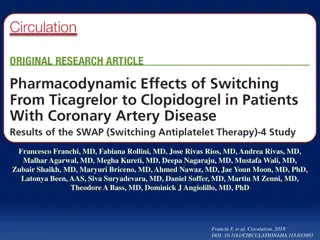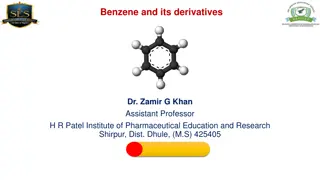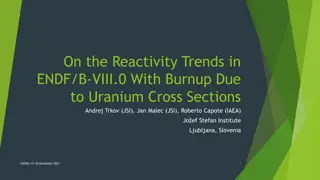Substituent Effects on Benzene Reactivity and Orientation
Substituents in benzene derivatives influence reactivity and orientation in electrophilic substitution reactions. They can be classified as ortho-para directing or meta directing based on their effect. Ortho-para directing groups increase electron density and activate the ring, while meta directing groups decrease electron density and deactivate the ring. Understanding these effects is crucial for predicting the outcome of substitution reactions on benzene rings.
- Substituent Effects
- Benzene Reactivity
- Electrophilic Substitution
- Ortho-Para Directing
- Meta Directing
Download Presentation

Please find below an Image/Link to download the presentation.
The content on the website is provided AS IS for your information and personal use only. It may not be sold, licensed, or shared on other websites without obtaining consent from the author. Download presentation by click this link. If you encounter any issues during the download, it is possible that the publisher has removed the file from their server.
E N D
Presentation Transcript
Substituent & effect of substituents on reactivity & orientation of mono substituted benzene Replace any one H by a substituent it gives a mono-substituted derivative of benzene. Mono-substituted convert into di-substituted benzene forms three isomers (ortho, meta & para) are possible. Directive incoming group/ directive influence group (group already present in the ring) decides the orientation & reactivity of the benzene nucleus towards further electrophilic substitution reaction. Effect of substituents on orientation: A second substituent can occupy any of the position ortho (2 & 6), meta (3 & 5), para (4) product. All group divided into two class on the basis of directive influence of group a) Ortho-para directing groups: e.g. alkyl(R), phenyl (-C6H5), halogens (-Cl, Br etc.), hydroxyl (-OH), alkoxy (-OR), amino (-NH2), anilide (-NHCOR) etc.
b) Meta directing groups : e.g. trialkyl ammonium ion (NR3), nitro (NO2), cyano (-CN), aldehyde (-CHO), ketonic(-COR), Carboxylic (-COOH), sulphonic acid (SO3H). Substituent which contain multiple bonds (double/triple) are usually meta directing which do not contain any multiple bonds but contain one or more pairs of electrons on the atom are ortho & para directing. Effect of substituents on reactivity: Ortho & para directing groups (except alkyl & phenyl) contain one or more paires of electrons on the atom & these electrons interact with the -electrons of the benzene and increase the electron density. All the ortho & para directing groups except halogens are activating groups. Meta directing group contain multiple bonds withdraw electrons & decreases electron density & act deactivating groups. Activating group- substituent activate the benzene ring for substitution.(o & p ) Deactivating group- substituent deactivates the benzene ring (m & X)
Theory of reactivity :- The rate of electrophilic substitution reactions depends upon the energy of activation. The rate depends on the availability of electrons in the benzene ring. The ring is electron rich (-ve), the electrophile attack is faster. If electron deficient (+ve) the attack is slower. Electron donating substituent will activate the aromatic ring (-OH, NH2, CH3), while an electron withdrawing substituent will deactivate (NO2, SO3H, COOH)
Anomalous behaviour of halogens A halogen substituent is electron releasing by resonance but electron withdrawing because of its high electronegativity (-I effect). Inductive effect is more than resonance effect so the net result is electron withdrawing. Which makes the ring electron deficient and deactivates the ring towards electrophilic substitution reaction. Theory of orientation: a) Ortho-para directing groups having electron releasing inductive effect (+I):- Alkyl group has electron releasing effect so it disperse the positive charge and thus stabilizes the carbocation. This effect is maximum in case of structure I & V as +ve charge is located on the carbon atom to which methyl group is attached. so, the structure I & V resulting from ortho & para attack are more, stable than resulting from meta attack.
b) Ortho-para directing groups having electron releasing (+R effect) resonance effect:-
Ortho-para attack four resonance hybrid structures produce while meta attack three structure produce. Structure IV & VII are more stable as +ve charge is delocalized on the nitrogen atom as well as the ring carbon atoms. No, such structure is possible in case of meta attack. so, -NH2, -OH, -OR, -NHR group is ortho & para directing. c) Meta directing groups:- All meta directing groups are electron withdrawing inductive & resonance effect. i.e. I & -R effect. (-NO2, CN, COOH, -CHO, -SO3H) Structures III & V are highly unstable as electron withdrawing nitro group is linked to the carbon atom carrying the +ve charge.
The unshared p-electrons present in the valence shell of halogens interacts with the p-electron of benzene & stabilizes the positive charge. Ortho-para attack produces four contributing structures while meta attack produces three contributing structures. Structure III & VII are highly unstable as +ve charge is present on a carbon atom to which electron withdrawing halogen is attached. Ortho-para attack the +ve charge is delocalized an three carbon atoms & the chlorine atom while this delocalization is not present in case of meta attack. As a whole in halogens the reactivity is controlled by the strong inductive effect & orientation is determined by the resonance effect. All halogens are ortho-para directing but deactivators towards electrophilic substitution reaction.
1) DDT (Dichloro Diphenyl Trichloroethane) Properties :- colourless, crystalline, tasteless, odourless, Organochlorine, highly hydrophobic, insoluble in water, Soluble in organic solvents, fats & oils. Uses :- insecticide, kill mosquitoes (Anopheles). Method of preparation :- heating chlorobenzene with Chloral in presence of conc. H2SO4
2) BHC (Benzene Hexachloride) Properties :- white crystalline solid, insoluble in water, variable Soluble in organic solvents, soluble in halogenated solvent (HCCl3), less soluble in esters, hydrocarbons & short chain alcohols. Uses :- pesticide in agriculture, treatment of (food crop, seed, Soil , pets, livestock ), pharmaceutical treatment lice, scabies in the form shampoos & lotions. Preparation :- chlorination of benzene in presence UV light.
3) Saccharin Artificial sweetener about 300-400 times more sweet than sucrose Or table sugar. Properties :- white crystals, odourless, heat stable, inert. Uses :- sweetening the product (drinks, medicines, toothpastes etc.) It has no nutritional value it is safe to consume for persons with Diabetes. Preparation :-
4) chloramine Properties :- it is derivatives of ammonia, inorganic comp., Unstable colourless liquid, soluble in water & ether, less soluble in Chloroform & carbon tetrachloride. Uses :- disinfectant, swimming pool disinfectant, improve odour & Flavour of water, use in bleach & as oxidators. Preparation :- the reaction of ammonia with sodium hypochlorite.
